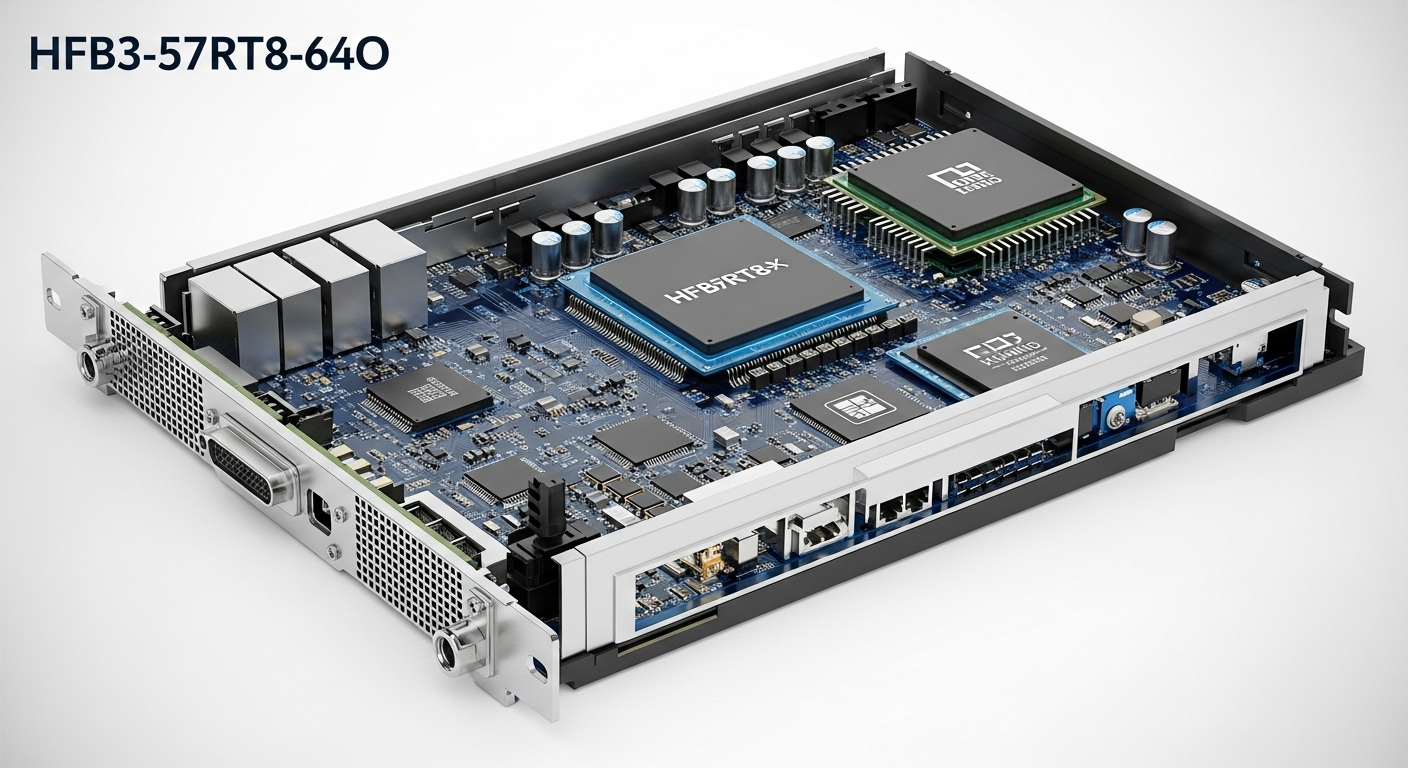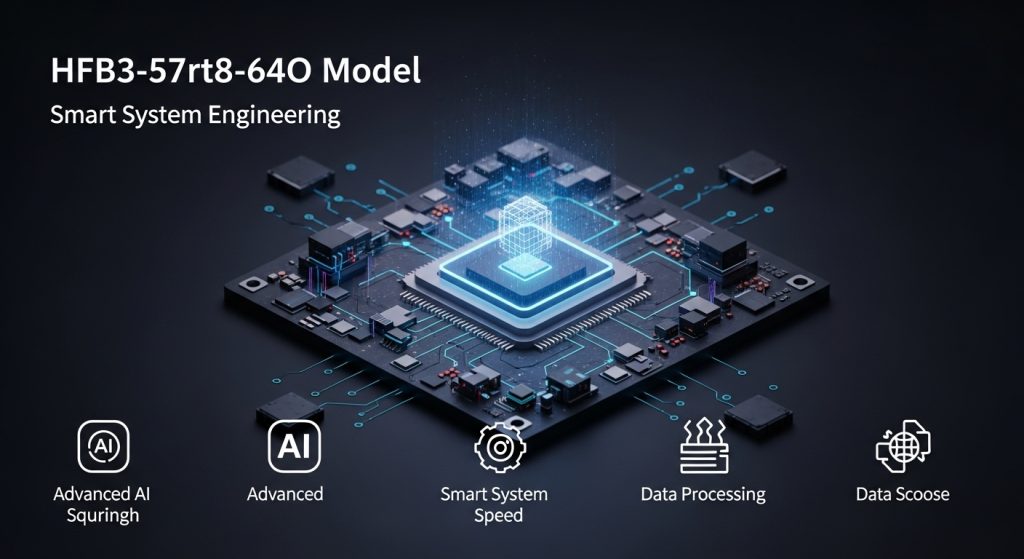
In today’s rapidly advancing technological landscape, the need for highly adaptive, efficient, and scalable systems is greater than ever. Among the latest innovations addressing this demand is the hfb3-57rt8-64o model—a cutting-edge solution designed for industries seeking to optimize performance through intelligent automation and real-time data processing.
With its forward-thinking architecture and powerful integration capabilities, the hfb3-57rt8-64o model has emerged as a favored choice for developers and engineers looking to build smarter systems. This article provides an in-depth look at what makes the model unique, how it works, and why it’s revolutionizing applications across multiple sectors.
What Is the hfb3-57rt8-64o Model?
The hfb3-57rt8-64o model is a high-performance control and automation framework that merges artificial intelligence, real-time feedback loops, and system integration tools into a unified platform. Developed to meet the complex needs of modern infrastructure—ranging from industrial automation to smart city systems—this model enables devices and networks to function more intuitively and efficiently.
Unlike conventional systems, the hfb3-57rt8-64o model adapts in real time to changing environmental and system conditions. It doesn’t merely follow programmed commands; instead, it learns from data inputs and adjusts its actions based on evolving patterns, which enhances both accuracy and system resilience.
Architectural Overview
The architecture of the hfb3-57rt8-64o model consists of several interconnected layers that work cohesively to deliver fast and intelligent system responses.
1. Input and Data Ingestion
The first stage of the model captures incoming data from various sources such as sensors, cloud APIs, and local networks. This data is then standardized and passed on to the processing engine.
2. Processing Core
The core is powered by machine learning algorithms that identify trends, outliers, and key operational variables. It uses predictive modeling and advanced analytics to interpret the data and determine the optimal course of action.
3. Execution and Output
The final layer is responsible for executing the decisions made by the processing core. Whether that’s adjusting machinery, updating databases, or sending alerts, the model ensures timely and precise actions.
These layers are linked through encrypted communication protocols to ensure data integrity and system security.
Key Features of the hfb3-57rt8-64o Model
Several standout features make the hfb3-57rt8-64o model an exceptional choice for next-generation system development:
- Real-Time Learning and Adaptability: The model is built to evolve with its environment. It learns from operational outcomes and fine-tunes its processes for improved efficiency.
- High Scalability: From edge devices to centralized cloud networks, the model can be scaled across small and large systems.
- Energy Optimization: Intelligent resource allocation ensures that systems using the model consume minimal energy without compromising performance.
- Plug-and-Play Compatibility: Supports seamless integration with existing platforms, making upgrades and expansions easier to implement.
- Data Encryption and Security: End-to-end protection ensures that sensitive information remains secure at all times.
Industry Applications
Thanks to its adaptable nature and broad compatibility, the hfb3-57rt8-64o model is being used across a wide variety of industries.
1. Manufacturing and Industrial Automation
In manufacturing environments, the model enhances production line monitoring, predictive maintenance, and quality assurance. Real-time data analysis helps manufacturers minimize downtime and maximize output.
2. Smart Cities
From traffic control systems to smart energy grids, the hfb3-57rt8-64o model helps urban infrastructure respond dynamically to usage patterns. It enables smarter decision-making at both micro and macro levels.
3. Healthcare
Hospitals and medical device manufacturers are adopting the model for remote patient monitoring, equipment automation, and data integration. The model supports life-saving decisions with timely alerts and accurate data interpretation.
4. Logistics and Transportation
Fleet management, route optimization, and load balancing are made easier with the model’s predictive capabilities. Companies can cut fuel costs and enhance delivery times with data-backed decisions.
5. Environmental Monitoring
The hfb3-57rt8-64o model is also being used in systems that monitor air quality, water levels, and climate data. It supports immediate action in response to environmental threats and helps organizations maintain regulatory compliance.
Implementation Strategy
Adopting the hfb3-57rt8-64o model requires a structured approach:
- Assessment and Planning: Identify specific pain points in your current system and define goals for improvement.
- System Integration: Use APIs and standard connectors to integrate the model with existing platforms and hardware.
- Training and Configuration: Fine-tune the model’s learning algorithms based on historical data and usage patterns.
- Monitoring and Adjustment: Continually evaluate the system’s performance and allow the model to self-adjust for optimal outcomes.
While the model is designed to minimize manual intervention, proper oversight during the initial stages ensures that its learning mechanisms are aligned with organizational goals.
Benefits of the hfb3-57rt8-64o Model
Implementing the hfb3-57rt8-64o model offers numerous benefits to both enterprises and end-users:
- Improved Accuracy: Reduces human error through machine-driven precision.
- Faster Response Time: Makes decisions in milliseconds, which is critical in mission-critical environments.
- Lower Operational Costs: Automates routine tasks and optimizes energy use.
- Enhanced Reliability: With self-correcting feedback loops, the system maintains high uptime and performance.
- Future-Ready Technology: The model is designed to evolve, making it a long-term solution for digital transformation.
Limitations and Considerations
Like any sophisticated system, the hfb3-57rt8-64o model has some limitations:
- Initial Complexity: Setup requires technical expertise, which may necessitate training or consulting support.
- Data Quality Dependence: The accuracy of the model is highly dependent on the quality and volume of data provided.
- Compatibility Challenges: Older legacy systems may need updating to fully integrate with the model.
Nonetheless, these challenges are typically outweighed by the long-term advantages the model offers.
Looking Ahead: Future Enhancements

The hfb3-57rt8-64o model is continuously being improved. Upcoming iterations may include:
- Integration with Quantum Computing
- Expanded Natural Language Processing Capabilities
- IoT Expansion with Greater Edge Support
- Built-In Blockchain Security for Immutable Data Logs
These advancements will further solidify the model’s role in powering the intelligent systems of tomorrow.
Conclusion
The hfb3-57rt8-64o model marks a significant step forward in the evolution of smart system design. With its intelligent learning capabilities, robust architecture, and real-time adaptability, it is helping industries redefine performance and efficiency.
Whether you’re optimizing an assembly line, modernizing a city grid, or building the next generation of healthcare solutions, the hfb3-57rt8-64o model offers the tools to make your systems smarter, faster, and more reliable. As organizations continue to pursue digital transformation, embracing technologies like the hfb3-57rt8-64o model will be key to staying competitive and future-proof.


